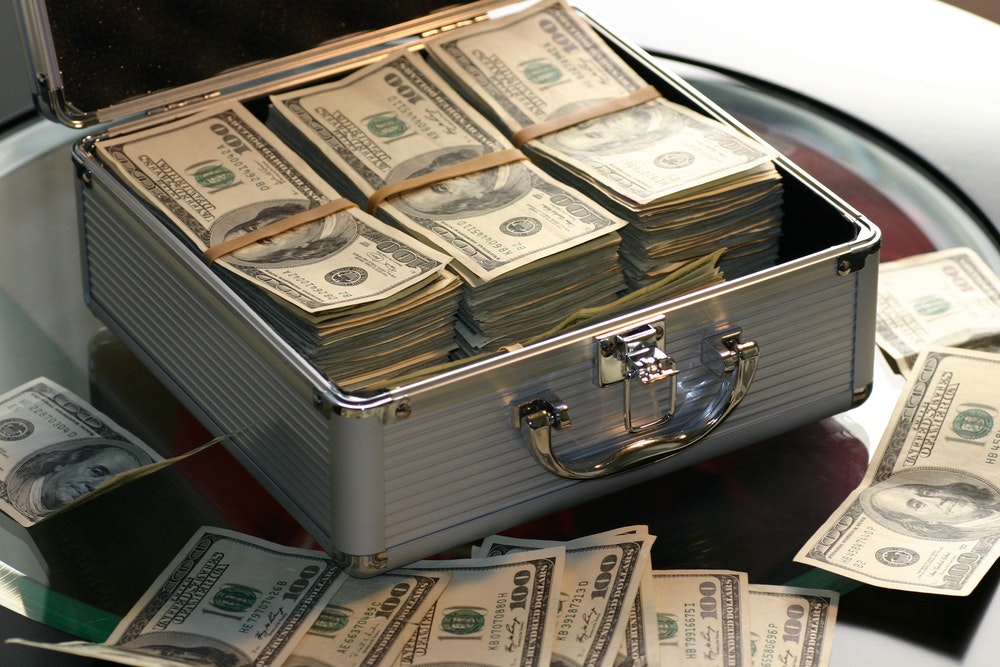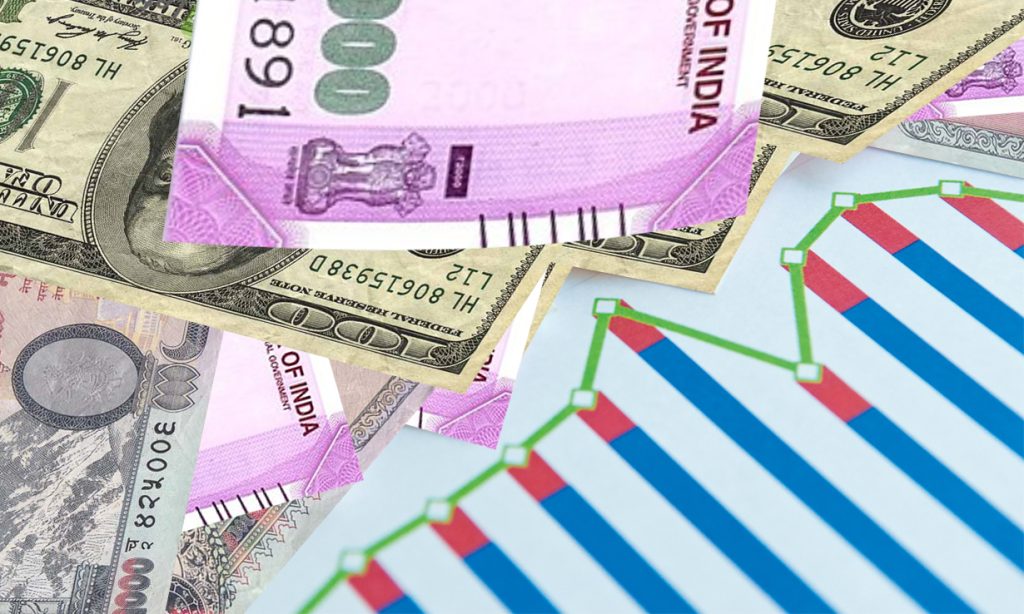Nepal’s neighbour India is going through two major crises at the moment. The first is the rising inflation that has rocked the country. Second, the rupee-dollar exchange rate has fallen to an all-time low, concerning many people in the country. As the Nepali currency is pegged to India’s (meaning, the exchange rate between the two countries does not change), the effects of these issues have impacted Nepal too.
Inflation has hit Nepal quite hard too. On top of that, the dollar rate has gone up too as one USD is equal to Rs 128, which is an all-time high.
Ideally, exchange rates are generally determined by the market forces of supply and demand for foreign exchange. But, this does not apply to Nepal as the value of the Nepali currency with the other is determined by how the Indian rupee is doing.
What are the advantages and disadvantages of this system?
The shared crisis

This is a cause for concern as any problems in the Indian economy directly affect the country due to the Nepali currency being pegged to the Indian one. In June, India’s retail inflation remained almost steady at 7.01 per cent month-on-month (MoM) but stayed well above the upper limit of the Reserve Bank of India’s (RBI’s) target range for the sixth consecutive time.
And since their exchange rate with the dollar was gone up too, this has caused other issues as the money spent on the imports has gone up significantly over the past few months with most goods costing a lot more than they did. The effect of this can be seen in the Nepali market too.
There is a growing risk that it will lead to a major economic crisis in the country, say experts.
Inflation has hit Nepalis hard. Even though Nepal Rastra Bank had set a ceiling on the inflation rate at 6.5, last month, the rate went as high as 8.5. There are a lot of countries that are facing this issue as the war in Ukraine has affected a lot of countries apart from Ukraine and Russia.
According to the former executive director at NRB, Nara Bahadur Thapa, there are a lot of factors for the current problems. Apart from the war affecting fuel supply and causing major issues worldwide, he says America’s federal reserve changing its interest rate to cope with the inflation has also led to the other countries currently performing poorly against the dollar.
“This has affected the world, not just countries like India and Nepal,” says Thapa.
The coronavirus crisis has not helped either. Food prices throughout the world have gone up. This had a negative impact on the purchasing power of the consumers affecting every sector in the world.
One of the major causes of inflation has been rising fuel prices. This is what has caused major inflation in India too. Since the federal reserve increased its interest rate, a lot of Indians have been found sending dollars they had to the US. This has resulted in the Indian rupee performing badly against the dollar. This, experts in India say will worsen inflation further. And, its impact on Nepal is apparent as the Nepali currency is pegged to the Indian one.
The good, the bad and the ugly of a powerful dollar

The dollar going up has both positive and negative aspects. The positive comes in the form of people earning through exports and the country through remittance. But since Nepal does not export enough, the country has not been able to take advantage of this.
The country could benefit through tourism too, but despite all the potential, the country has been unable to sell Nepal as a tourist destination as the record number of tourists arriving in a year has only been a million. Another positive is since the dollar is high, it also discourages imports. Ideally, this would help in improving Nepal’s trade deficit.
But, there are its downsides too. Since the dollar is more expensive, this will give a massive rise to inflation on a number of products including fuel.
Since Nepal mostly imports essential goods, the rising cost of the dollar does not seem likely to decrease imports. This means there is a high risk of the country’s trade deficit worsening.
There is also a risk of the country not getting the foreign investment it needs since people who have dollars try and save it instead of investing in a country where the dollar is weak. Like in India, there is also a risk that Nepalis rather send dollars to the US where it is the most powerful.
Is the Nepali currency being pegged a boon then?

Whether the Nepali currency being pegged to the Indian rupee is good for the country has been discussed time and again.
Some importers have complained that Indian products imported to Nepal have received additional protection from Nepal due to the begging between the Nepali currency and the Indian one.
They say this because a lot of products being imported from countries in Europe, Central Asia and the United States have become expensive compared to the same type of products being imported from India. This, some importers argue, is a reason why Nepal’s trade deficit is not improving as the country does not want to develop a production sector as it is busy being dependent on India for major goods.
But if you look at the past, there was a time when the Nepali currency was not fixed to the Indian one. In 1966 when Surya Bahadur Thapa was the country’s prime minister, he set a constant exchange rate with India that IRs 100 would be equal to NRs 101. But, this had a negative impact on trade as India stopped importing wood, oilcake, rice and ghee from Nepal.
The move was called nationalistic but soon after, it had an inverse effect on the economy. Consequently, the decision was revoked.
Economist Keshav Acharya says there is no need to discuss if Nepal needs to review the policy of the Nepali currency’s exchange rate with India as he believes it will have a major impact on a lot of things.
“These things should be discussed by the government in a closed room because we need to see how it will affect the country’s trade with India,” says Acharya. “It might look great in the short term, but its impact, in the long run, is something we need to discuss in detail.”
He believes that this issue is political and diplomatic as there are so many areas in the country where the Indian rupee is easily accepted. There are even areas where the Indian rupee is used more than the Nepali currency.
Former NRB official Thapa says the set exchange rate is a boon for Nepal as it has helped trade between the countries.
“India’s economic management is good. Since the crisis in the 1990s, it had paid a lot of attention to making its economy sustainable,” says Thapa. “If we remove the set exchange rate with India, we won’t be able to take advantage of its positive aspects.”
Thapa believes that if there was not a constant exchange rate between the Nepali currency and the Indian counterpart, Nepal would not have been able to maintain its economic stability.
If Nepal does review its exchange rate with India and decides not to peg, the Nepali currency will have to be devalued. The current exchange rate is 1:1.6. But, if it is reviewed, it will probably be 1:2 or 1: 2.5, which will be detrimental to the country’s economy and trade.
Nepal’s trade deficit with India in the past fiscal year stood at Rs 955 billion. During this time, Nepal’s total trade deficit stood over Rs 1.577 trillion.
“Nepal’s trade deficit with India is huge. We can’t even think about changing the exchange rate or not pegging the Nepali currency with the Indian one,” says economist Thapa.
Thapa says if Nepal does that, the country will face a major crisis and adds such a review can only be done if Nepal’s economy is in a better place.
Thapa feels that what the previous generations did by pegging the Nepali currency to the Indian one was great and they did so not in haste but in a prudent way.
“If we review the Nepali currency’s exchange rate with India and stopped pegging, I believe those in the middle class will become poor again due to rising inflation,” says Thapa.
This story was translated from the original Nepali version and edited for clarity and length.



























